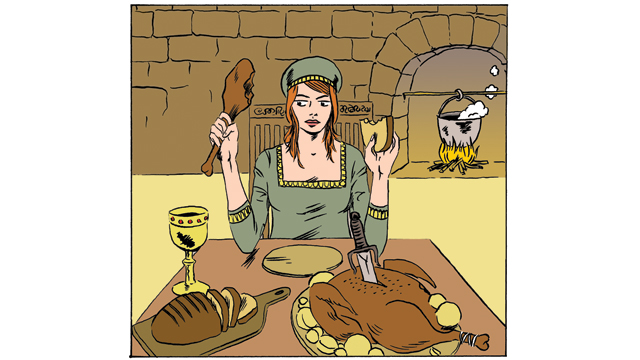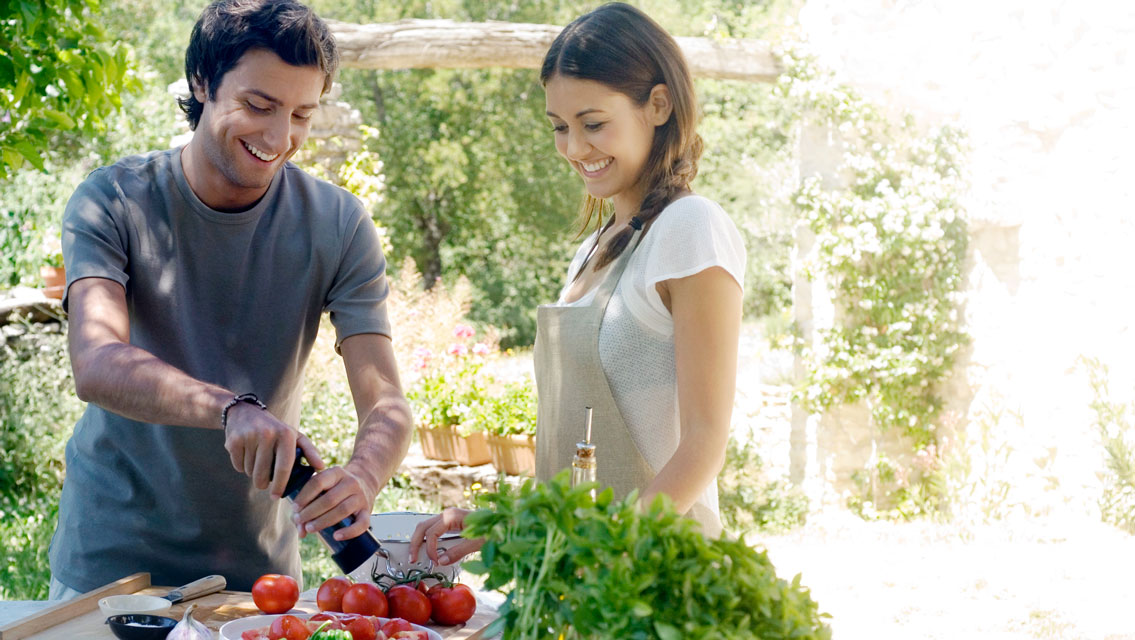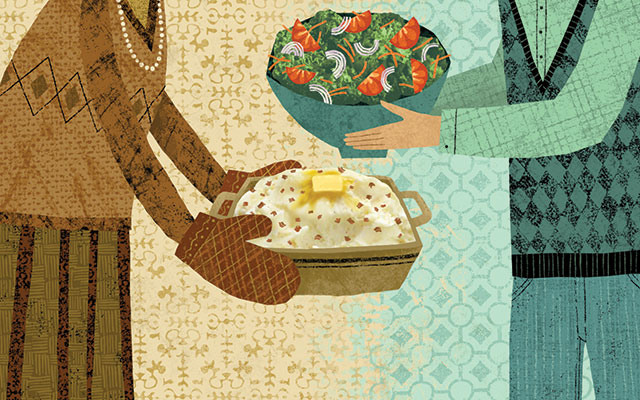People are always asking me about food trends: What will happen in 2012? What was the biggest thing of 2011? Unfortunately, a lot of the most honest answers are both dull and awful. Like, the trend is — hamburgers!
Yes, for 20 years now, hamburgers have been on the march, moving from the ragged edges of American cuisine to the absolute center of the plate, crowned with cheese and eggs and, if you want them, a dozen pancakes and syrup.
But who wants to hear that? Nobody. People want to hear trends that make them happy. Burgers conquering all is not a happy trend. Because daily helpings of burgers and fries create a world in which obesity continues to swell (pardon the pun), as do its awful shadows, eating disorders and chronic disease.
Speaking of which, here are other trends no one wants to hear about: cupcakes, malts, sundaes and doughnuts. Each supplants the other in season, and never does fruit salad take a turn.
Clearly, people want a treat. And why shouldn’t they? With an ever-escalating workweek and ever-lengthening commutes, there has to be 10 seconds in a day we can call our very own, and feel full of joy. Even if it’s the fleeting joy of a jelly doughnut.
By now, of course, everyone knows about both the joys and perils of jelly doughnuts. But as I said, these are not trends people want to know about. They are just the trends that seem to have a grip on us, whether we like it or not.
So how have we gotten here, to this revolving, perennial buffet of ultra-fattening, ultra-unhealthy foods? And how can we begin to change?
Frankly, I don’t know if most people are aware that our food traditions even are traditions, per se — much less that they are something we can adjust if we choose.
This struck me with force the other day, when I was reading the cultural anthropologist Margaret Visser’s book, Much Depends on Dinner (Grove Press, 2010). It’s a remarkable book, astonishing for the cultural insights it divines by simply deconstructing the history of a very plain meal: a roast chicken, corn on the cob with butter and salt, salad, and ice cream.
Visser points out, for example, that the origins of the simple roast chicken (which I consider to be the most basic, most obvious and natural of all possible dinners) are more complicated than you might think.
It turns out that the tradition of presenting a whole, unadulterated bird is an Anglo-Saxon idea, carried to present-day America via our British colonial heritage. “British cuisine has always despised and rejected frivolous, dishonest, or merely confused Continental concoctions,” Visser writes; “the ideal has always been ‘the best ingredients, undisguised.’”
Why? Because of the worry that all the dark Anglo-Saxon criminals around you would in some way poison, adulterate or otherwise mess up any food you couldn’t plainly see with your own eyes.
You will perhaps recall the history of the handshake, initiated to prove you didn’t have a weapon in your hand. The appeal of a plain roast chicken is based on a similar “nothing to fear” premise. And a hearty handshake followed by a roast chicken, a prime rib of beef, a pork chop? Why, that promised to keep you safe for a couple of hours.
Of course, those defensive-eating Anglo-Saxons couldn’t have fathomed a world of modern industrial chickens fed growth-stimulating antibiotics and injected with weight-plumping saline solution. Which makes one wonder whether the organics movement is in some ways simply a continuation of those old “what you see is what you get” eating values of yore.
Anyway, back to Anglo-Saxon life. We know that it was nasty and brutish, and so a whole, unadulterated chicken seemed a useful defense against poisoning by enemies, real or imagined. But what about vegetables?
In Anglo-Saxon times, most were in very limited supply. There were onions, legumes, a little lettuce, but that’s about it. Potatoes, tomatoes, corn, bell peppers, and a whole host of other vegetables were native to South or Central America, and thus weren’t available to European cuisine until well after Columbus’s voyage. The first carrots were simply the taproots of the plant we call Queen Anne’s Lace (what we’d recognize as carrots probably didn’t show up in Europe till around maybe AD 800 or 1000).
So what many folks’ Anglo-Saxon ancestors had to eat (and by now you’re probably getting how these food traditions have played out in modern-day appetites) was mostly grains — wheat, barley and oats — and animals (which efficiently converted feed, either foraged or grown, to people food).
In fact, there was a Medieval right of “pannage” — the right to send your hogs into the lord’s forests to eat all the acorns and beechnuts that had fallen — a good way to convert food that’s very difficult for people to eat.
And once the pigs were fat on acorns and turned into food, the best policy was to preserve the easily preserved parts, the hams and hocks and bacon, and gorge on the rest, and then take a long nap.
Visser doesn’t mention anything about naps, but I know a fair amount about Medieval naps, because evidently one of my hobbies is collecting anecdotes on the topic. For instance, in The Discovery of France (W. W. Norton, 2008), the historian Graham Robb notes that the strategy for getting through the Medieval winter, practiced from Burgundy to the Alps, was to try to do nothing, thus lowering your metabolic rate enough to get you to spring, when food returned.
This intensive napping was normal throughout Europe, Robb noted in a New York Times interview: “In 1900, The British Medical Journal reported that peasants of the Pskov region in northwestern Russia ‘adopt the economical expedient’ of spending one-half of the year in sleep.”
Imagine if they’d had cable — and could have ordered a meat-lover’s pizza delivered, with a free 2-liter Coke!
So now that we do have cable, and are saddled with food traditions from an entirely different time, is it any wonder that our eating habits have gone haywire? Clearly, if we keep living in the grip of unexamined, unconscious cultural traditions, we are destined to just keep getting plumper and sicker.
So, what’s our alternative? To think about, or even try, some other traditions.
That’s tough, frankly. It’s nearly impossible to get any kind of mental distance on something this big and ingrained and omnipresent. Because this is how you’ve always done it, and this is how everyone has always done it, and this is how all the grocery stores work, and the restaurants, and your family. But it can be done, and if you choose to, one way to go about it would be to try a vegetarian Buddhist meal.
There’s a restaurant in New York City called Kajitsu, which specializes in shojin cuisine, which is a vegetarian Zen Buddhist temple cuisine meant to focus the mind and bring meaning out of something that seems to have none. For instance, a course of steamed purple-top turnips with gingko nuts and wood-ear mushrooms would, if you paid attention, tell you something about the quietness of winter. A spring dish of grilled bamboo shoots with arugula tempura, yuzu-pepper oil and steamed white asparagus would communicate the misty strivings of nature in spring. The whole idea of temple cuisine might be an eye-opener for you. (It also might be a wallet-opener; dinner at Kajitsu starts at $50 a person.)
So yes, shojin vegetarian temple cuisine might seem like a blast of white and icy light for those of us just coming out blinking from the dark of our long-held food traditions of bingeing and napping. But mindfully eating an apple might be possible.
Just last year, Vietnamese Buddhist monk Thích Nhat Hanh offered some advice on that topic in his book Savor: Mindful Eating, Mindful Life (HarperOne, 2011), which he cowrote with Lilian Cheung of the Harvard School of Public Health. I read about this book on my computer (where else?), during a weekday lunch at my desk.
Consider your apple, Thích Nhat Hanh advised. “Wash it. Dry it. Before taking a bite, pause for a moment. Look at the apple in your palm and ask yourself: When I eat an apple, am I really enjoying eating it? Or am I so preoccupied with other thoughts that I miss the delights that the apple offers me?” I literally looked down from his words to the apple I had been glomming down with complete, unthinking hunger.
I haven’t looked at an apple the same way since. Or a chicken. And while I’ll probably live the rest of my life preferring my inherited raft of Anglo-Saxon food traditions, looking at them in such a way that I can see them at all seems like a benefit, and a way to meaningful change.




This Post Has 0 Comments